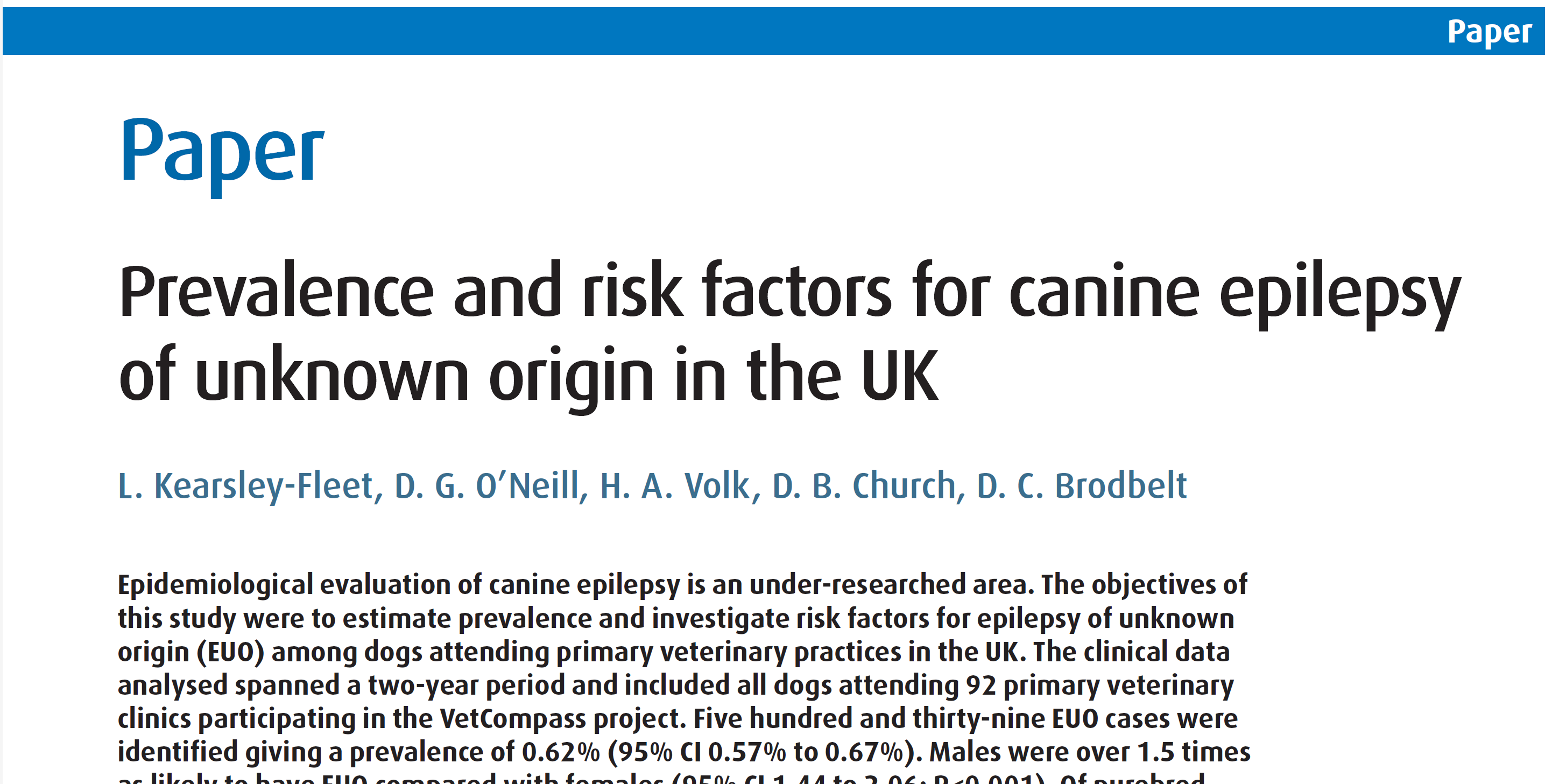Epilepsy is the most common chronic neurological disorder in humans, with an estimated worldwide prevalence of 0.4–1.-% per cent. Epilepsy has also been suggested to be the most common chronic neurological condition in dogs, affecting an estimated prevalence of 1.0–2.0% in referral hospital populations. But, prior to this paper, the prevalence of epilepsy in the general dog population, was unknown.
The full publication of Prevalence and risk factors for canine epilepsy of unknown origin in the UK is available on the VetCompass website.
Epidemiological evaluation of canine epilepsy is an under-researched area. The objectives of this study were to estimate prevalence and investigate risk factors for epilepsy of unknown origin (EUO) among dogs attending primary veterinary practices in the UK. The clinical data analysed spanned a two-year period and included all dogs attending 92 primary veterinary clinics participating in the VetCompass project. Five hundred and thirty-nine EUO cases were identified giving a prevalence of 0.62% (95% CI 0.57% to 0.67%). Males were over 1.5 times as likely to have EUO compared with females (95% CI 1.44 to 2.06; P < 0.001). Of purebred dogs, the border terrier had 2.70 (95% CI 1.57 to 4.62; P < 0.001) and the German shepherd dog had 1.90 (95% CI 1.28 to 2.80; P=0.001) times increased odds of EUO compared with crossbred dogs. In addition, the West Highland white terrier had reduced odds (OR 0.23; 95% CI 0.08 to 0.62; P=0.004) of EUO compared with crossbred dogs (likelihood ratio test P < 0.0001). No association was found with neuter status, colour or weight. The current study highlights the clinical importance of epilepsy as a canine disorder in the UK. Increased awareness of sex and breed predispositions may assist clinicians with diagnosis. Further research is merited to evaluate the specific breed associations identified.
 Donate
Donate
Recommended Comments
There are no comments to display.
Join the conversation
You can post now and register later. If you have an account, sign in now to post with your account.
Note: Your post will require moderator approval before it will be visible.